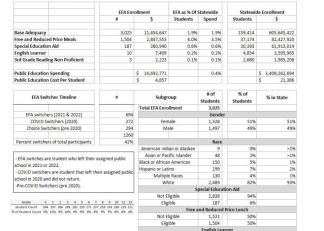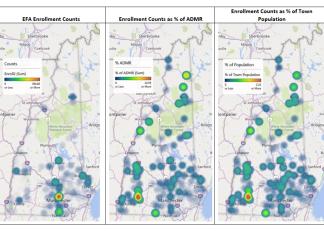Press Release
Contact
Second year of Education Freedom Accounts prospering
‘New Hampshire cares about its students, and the EFA program is proof of that’
CONCORD, NH — More than 3,000 children from economically disadvantaged homes throughout New Hampshire have been approved for Education Freedom Accounts during its second year of implementation.
The EFA program celebrated its one-year anniversary on September 1, and is pleased to announce that 3,025 students are now enrolled, which includes 1,572 students who also participated during its launch last year.
“This program has grown significantly, and at a faster pace than other states that have adopted similar initiatives. While it has exceeded our expectations, it is exciting and encouraging to know that New Hampshire families now have the opportunity to determine the best educational pathways for their children, and that economically disadvantaged students will also have various options to fit their personal learning needs,” said Frank Edelblut, commissioner of education.
Education Freedom Accounts allow eligible New Hampshire students to direct state funded per-pupil education adequacy grants toward select educational programming of their choice for a variety of learning experiences. There are currently 3,025 children enrolled in the EFA program that is offering grants totaling nearly $14.7 million this school year. The cost to taxpayers would be about $65 million if the 3,025 students, who are all eligible, attended a traditional public school.
For Peggy Lefavor, the EFA program has been a lifesaver for her 12-year-old grandson who was not thriving in one of the state’s largest public school districts.
“We struggled with what to do,” said Lefavor, who is a custodial grandmother. Lefavor learned about the EFA program and ultimately decided to move her grandson out of the public school setting and instead enroll him at Presentation of Mary Academy last year using EFA funds. “I am so grateful, very, very grateful. We didn’t have any other options.”
Now, her grandson is preparing for his eighth-grade year and is eager to have a strong educational experience before likely attending Bishop Guertin next fall, she said.
The first round of this year’s EFA funding was made available in digital wallet accounts last week. Among the 3,025 current participants, 187 of those enrolled are special education students and 1,504 are eligible for free and reduced lunch.
“Half of the children enrolled are living below the poverty level. These families are seeking a nontraditional instructional model for their children who may not have found educational success,” said Edelblut.
About 400 of the newest 1,453 EFA students for this year switched from a public school to an Education Freedom Account program, or about 27 percent. Furthermore, among the 187 special education students, 46 of those transitioned from a public school to an EFA, or about 25 percent.
“The EFA program really catapulted us into being able to access that which we could not afford for our children,” said Megan Ebba, a parent of three EFA students. “It has been a huge blessing for our family. Our kids are thriving under the EFA program. New Hampshire cares about its students, and the EFA program is proof of that.”





